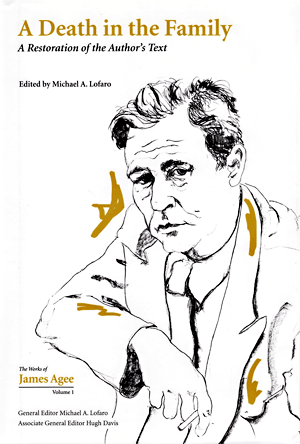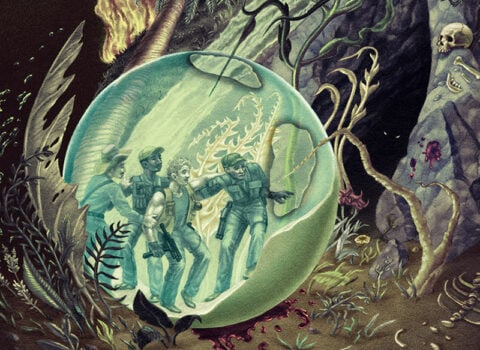
I have been spending some time lately with the Michael A. Lofaro Edition of James Agee’s novel A Death in the Family. The Lofaro was published earlier this year by The University of Tennessee Press, and is one of the most interesting scholarly editions of a work of fiction that I can recall. Lofaro is a professor of American literature and American and cultural studies at the University of Tennessee, Knoxville; his edition carries the subtitle “A Restoration of the Author’s Text,” which fairly describes its purpose.
Agee died before his novel could be published and editor/publisher David McDowell took charge over the book. As the novel was awarded the Pulitzer Prize and the book has become a modern classic, one might suppose that an argument over its editor’s acumen would be moot. After all, wrote McDowell in a note to the reader, he did so little:
This novel, upon which [Agee] had been working for many years, is presented here exactly as he wrote it. There has been no re-writing, and nothing has been eliminated except for a few cases of first-draft material which he later re-worked at greater length, and one section of seven odd pages which the editors were unable satisfactorily to fit into the body of the novel…. The title, like all the rest of the book, is James Agee’s own.
Yet we learn from the 226 pages of back-matter that accompany this new edition that McDowell exaggerated his restraint. “The title,” Lofaro writes on the first page of his commentary and notes, “is most likely one created by David McDowell. No evidence has yet been uncovered that would help determine Agee’s intent regarding the title of the novel. He most often referred to it as ‘the book.'”
I have no familiarity with Agee’s papers, and would not question the veracity of Lofaro’s counter-claim. (Though anyone who has done some digging through the linear feet of the literary archives of a late writer knows too well that while such troves do indeed offer the answers to burning questions, they often contain multiple, incompatible answers to those questions.) My only grumble with Lofaro is that we have to reach the 213th page of his scrupulous iteration of variants before we find a rather astonishing table:
| A Structural Comparison of the Restored and the McDowell Editions | |
|---|---|
| Restored Edition | McDowell Edition |
| Introduction | Deleted |
| Chapter I | Earlier draft version used as first part of italicized flashback |
| Chapter 2 | Earlier draft version used as second part of italicized flashback |
| Chapter 3 | Earlier draft version used as third part of italicized flashback |
| Chapter 4 | Used as italicized flashback |
| Chapter 5 | Deleted |
And so on…
| Chapter 21 | Chapter 3 |
| Chapter 22 | Chapter 4 |
| Chapter 23 | Deleted |
| Chapter 24 | Chapter 6 |
And so on, through the end…
| Chapter 43 | Used as the second part of Chapter 19 |
| Chapter 44 | Used as the first part of Chapter 20, but McDowell never corrects the prayers mistakenly submitted to him by Father Flye |
| Chapter 45 | Used as the second part of Chapter 20 |
The mind reels. From this simple table we learn that more than ten of Agee’s original chapters were deleted, a brute fact incompatible with McDowell’s claim that only “seven odd pages” of Agee’s manuscript were cut. Readers of this magazine read four of those cut chapters last year, and they seem like anything but what one might call “first-draft material.”
It would be time wasted to debate the disingenuousness of McDowell’s “A note on this book.” But we should still ask: to what end were McDowell’s editorial acrobatics? That is the larger question that the Lofaro edition asks, and it’s a useful question, particularly when not a few writers find themselves in the position of having their novels edited desultorily. Over the years a number of younger writers have confessed to me their frustration at seeing their manuscripts tidied but barely touched before flowing into type (just as any number of readers have asked, “Is anyone editing these things?”). Novels need good editors, editors of taste and vision, to reckon with the imperfections that the novel, in seeking its perfections, generates. The list of books that have been shaped by editors as much as their writers is long and interesting; the invocation of the name Max Perkins serves as flag and totem to the cause.
In the case of Agee’s novel, we readers and amateurs of literature have a rare chance, if it suits us, to see just what an editor does or can do. And specifically, if one were to read the Lofaro Agee first and the McDowell Agee second a reader would be able to judge firsthand not just what, but how well, Agee’s editor really did do, after all.
































































































